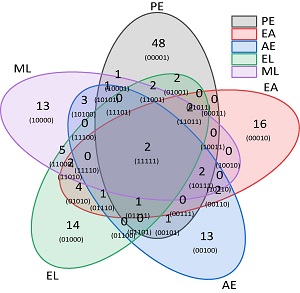 PDF(6202 KB)
PDF(6202 KB)


基于GC-MS和UPLC-QTOF/MS技术的灵芝孢子粉化学成分分析
佘新松,姚婷,韩燕峰,甘卓亭,周蔚,袁旺生,唐敏
菌物学报 ›› 2020, Vol. 39 ›› Issue (5) : 881-906.
 PDF(6202 KB)
PDF(6202 KB)
 PDF(6202 KB)
PDF(6202 KB)
基于GC-MS和UPLC-QTOF/MS技术的灵芝孢子粉化学成分分析
 ({{custom_author.role_cn}}), {{javascript:window.custom_author_cn_index++;}}
({{custom_author.role_cn}}), {{javascript:window.custom_author_cn_index++;}}Chemical compositions of Ganoderma lingzhi spore powder analysed by GC/MS and UPLC-QTOF/MS
 ({{custom_author.role_en}}), {{javascript:window.custom_author_en_index++;}}
({{custom_author.role_en}}), {{javascript:window.custom_author_en_index++;}}
| {{custom_ref.label}} |
{{custom_citation.content}}
{{custom_citation.annotation}}
|
/
| 〈 |
|
〉 |